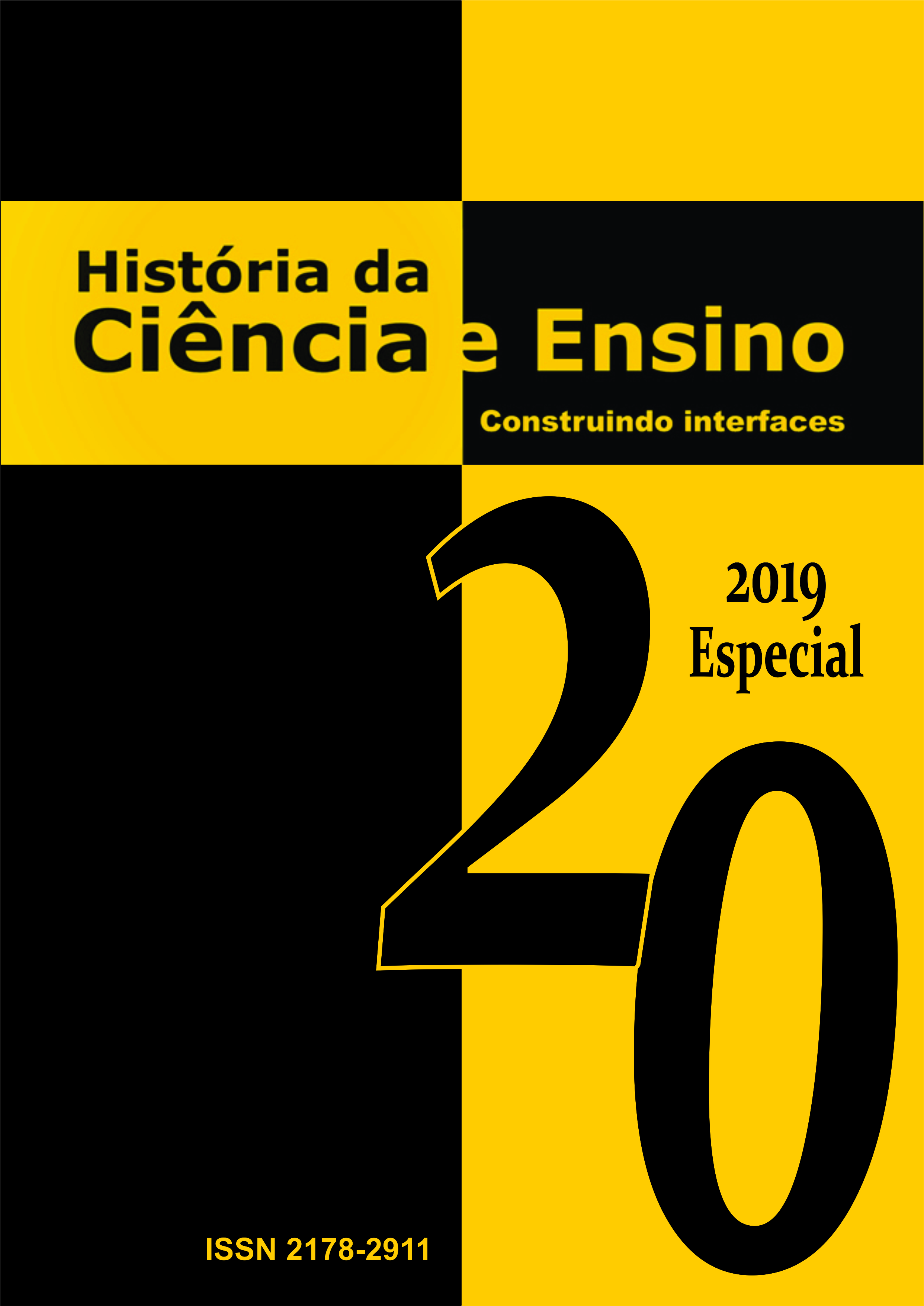Ciência-Religião no caso de Galileu Galilei: Que relações veiculadas na literatura infantil e juvenil?
DOI:
https://doi.org/10.23925/2178-2911.2019v20espp275-288Resumo
Resumo
A História da Ciência tem revelado uma relação entre Ciência e Religião pautada pela complexidade, constatando-se a mudança das fronteiras entre estas duas esferas ao longo dos tempos e afirmando-se a impossibilidade de compreender o modo como se relacionam se desenquadradas dos respetivos contextos históricos sob o risco de se gerarem artificialismos ou anacronismos. A relação entre Galileu e a Igreja Católica é, entre outros, um caso exemplificativo. Neste contexto e sabendo-se que esta relação é abordada em livros de literatura infantil e juvenil, emerge a importância de refletir sobre o modo como estes livros induzem uma visão da relação Ciência-Religião. A definição do objetivo de investigação – Identificar o tipo de relação Ciência- Religião veiculada em livros de literatura infantil e juvenil publicados em Portugal sobre a vida e obra de Galileu Galilei – determina o recurso à técnica de análise de conteúdo, em função de categorias definidas a priori, e aplicada a um corpus de análise constituído por dez livros. A análise efetuada mostra que é veiculada predominantemente uma visão simplista da relação Ciência-Religião, reforçando um posicionamento popular de conflito permanente. Revela-se importante refletir sobre a pertinência da exploração da relação Ciência-Religião nestes livros, considerando não só a relação entre a sua complexidade e o nível etário e os conhecimentos dos destinatários mas também a necessidade de evitar veicular visões deformadas.
Palavras-chave: Relação Ciência-Religião, Galilei Galilei, Literatura infantil e juvenil
Abstract
The history of Science has shown a complex relation between Science and Religion. It has put in evidence how the borders between these two spheres have been changing throughout time, and has stated the importance of the historical contexts to understand the interplay between them. Indeed, neglecting these historical contexts increases the risk of creating artificialism or anachronism. The relation between Galileo and the Catholic Church is, among others, an exemplary case. In this case, and because this relation is approached in children and youth’s literature, it is important to reflect on how these books induce a vision of the relation Science-Religion. The aim of the study – to identify the type of relation Science-Religion covered in children and youth’s books published in Portugal about the life and work of Galileo Galilei – implies the use of a content analysis technique, in which a priori categories were defined and employed in a corpus of analysis composed by ten books. Data analysis shows that the books often cover a simplistic vision of the relation Science-Religion, which reinforce the popular perspective of permanent conflict. It is important to reflect on the relevance of exploring the relation Science-Religion in this type of books. This requires to have in consideration not only the complexity of the relations, the age and knowledge of the readers, but also the need to avoid covering deformed visions.
Keywords: Relation Science-Religion, Galileo Galilei, Children and Youth ́s literature


